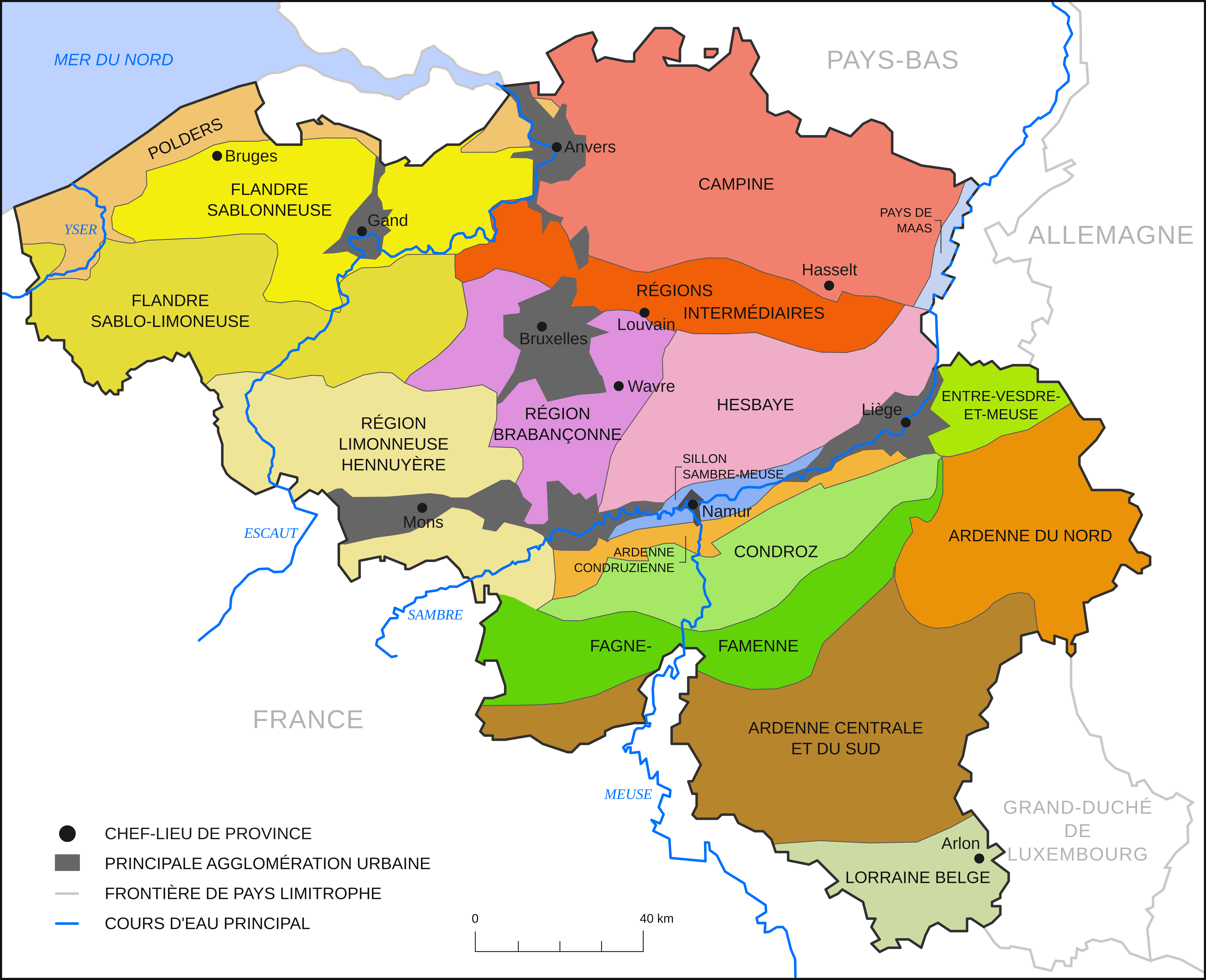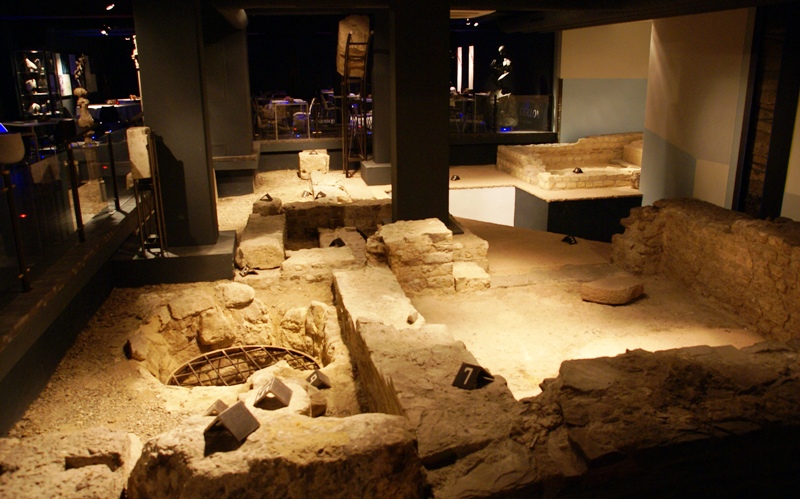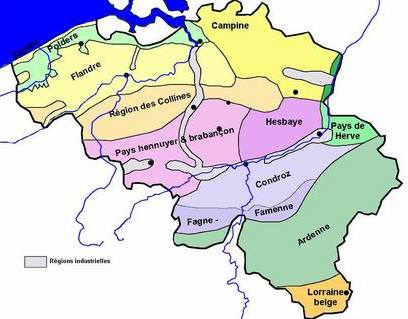|
Gilbert, Count Of The Maasgau
Gilbert (Giselbert), Count of Maasgau was a Frankish noble in what would become Lotharingia, during his lifetime in the 9th century. The Carolingian dynasty created this "middle kingdom" and fought over it, and he was is mentioned as playing a role on both sides. After the death of Louis the Pious in 840, Gilbert was a vassal of Charles the Bald in the western kingdom which later became France, but he switched sides to join Charles' brother Lothar I, who would become first king of the future Lotharingia. Gilbert later offered to switch sides again. Various proposals have been made about his family connections and exact titles, though most of these are considered uncertain. *Based upon a contemporary description of him as "comes Mansuariorum", it is proposed that he held the on the lower Meuse. *He is sometimes seen as a count who held the Pagus Lomacensis, which included the pagus of Darnau. *He is believed to be a likely ancestor or close relative of Reginar I and the Reginarid ... [...More Info...] [...Related Items...] OR: [Wikipedia] [Google] [Baidu] |
Franks
The Franks ( la, Franci or ) were a group of Germanic peoples whose name was first mentioned in 3rd-century Roman sources, and associated with tribes between the Lower Rhine and the Ems River, on the edge of the Roman Empire.H. Schutz: Tools, Weapons and Ornaments: Germanic Material Culture in Pre-Carolingian Central Europe, 400-750. BRILL, 2001, p.42. Later the term was associated with Romanized Germanic dynasties within the collapsing Western Roman Empire, who eventually commanded the whole region between the rivers Loire and Rhine. They imposed power over many other post-Roman kingdoms and Germanic peoples. Beginning with Charlemagne in 800, Frankish rulers were given recognition by the Catholic Church as successors to the old rulers of the Western Roman Empire. Although the Frankish name does not appear until the 3rd century, at least some of the original Frankish tribes had long been known to the Romans under their own names, both as allies providing soldiers, and as e ... [...More Info...] [...Related Items...] OR: [Wikipedia] [Google] [Baidu] |
Aquitaine
Aquitaine ( , , ; oc, Aquitània ; eu, Akitania; Poitevin-Saintongeais: ''Aguiéne''), archaic Guyenne or Guienne ( oc, Guiana), is a historical region of southwestern France and a former administrative region of the country. Since 1 January 2016 it has been part of the region of Nouvelle-Aquitaine. It is situated in the southwest corner of Metropolitan France, along the Atlantic Ocean and the Pyrenees mountain range on the border with Spain, and for most of its written history Bordeaux has been a vital port and administrative center. It is composed of the five departments of Dordogne, Lot-et-Garonne, Pyrénées-Atlantiques, Landes and Gironde. Gallia Aquitania was established by the Romans in ancient times and in the Middle Ages, Aquitaine was a kingdom and a duchy, whose boundaries fluctuated considerably. History Ancient history There are traces of human settlement by prehistoric peoples, especially in the Périgord, but the earliest attested inhabitants in the south- ... [...More Info...] [...Related Items...] OR: [Wikipedia] [Google] [Baidu] |
Ardennes
The Ardennes (french: Ardenne ; nl, Ardennen ; german: Ardennen; wa, Årdene ; lb, Ardennen ), also known as the Ardennes Forest or Forest of Ardennes, is a region of extensive forests, rough terrain, rolling hills and ridges primarily in Belgium and Luxembourg, extending into Germany and France. Geologically, the range is a western extension of the Eifel; both were raised during the Givetian age of the Devonian (382.7 to 387.7 million years ago), as were several other named ranges of the same greater range. The Ardennes proper stretches well into Germany and France (lending its name to the Ardennes department and the former Champagne-Ardenne region) and geologically into the Eifel (the eastern extension of the Ardennes Forest into Bitburg-Prüm, Germany); most of it is in the southeast of Wallonia, the southern and more rural part of Belgium (away from the coastal plain but encompassing more than half of the country's total area). The eastern part of the Ardennes forms the ... [...More Info...] [...Related Items...] OR: [Wikipedia] [Google] [Baidu] |
Hesbaye
The Hesbaye ( French, ), or Haspengouw (Dutch and Limburgish, ) is a traditional cultural and geophysical region in eastern Belgium. It is a loamy plateau region which forms a watershed between the Meuse and Scheldt drainage basins. It has been one of the main agricultural regions in what is now Belgium since before Roman times, and specifically named in records since the Middle Ages, when it was an important Frankish ''pagus'' or gau, called ''Hasbania'' in medieval Latin. Location Major parts of three Belgian provinces are dominated by the Hesbaye landscape, important for both tourism and agriculture, and by some definitions it stretches further: *The southern half of the province of Limburg, including the cities of Tongeren, Sint-Truiden, Bilzen and Borgloon. *Liège province north of the Meuse, including for example the towns of Hannut and Waremme. *Eastern Walloon Brabant including Jodoigne and Perwez. *Easternmost Flemish Brabant, including Tienen, Hoegaarden, Lande ... [...More Info...] [...Related Items...] OR: [Wikipedia] [Google] [Baidu] |
Susteren
Susteren (; li, Zöstere ) is a city in the Dutch province of Limburg. It is located in the municipality of Echt-Susteren, about 7 km northwest of Sittard. It was a separate municipality until 2003, when it was merged with Echt. Susteren received city right in 1276. Susteren harboured the Benedictine Abbey Susteren, that was founded in the 8th century and was closed at the end of the 18th century. Its Romanesque church was raised to the status of a basilica in 2007 by pope Benedict XVI. There is a museum ‘t Stift next to the church. Other sights are the Cannon on the market, castle Eyckholt, the mill Dieterdermolen and typical River Meuse valley farms like the Hommelhof. In 1865, Susteren railway station opened on the Maastricht to Venlo railway line. Gallery File:Aan de Statie, Susteren (P1090757).jpg, Residential neighbourhood File:Voorgevels - Susteren - 20206810 - RCE.jpg, Houses on the market square (1965) File:HUA-164995-Gezicht op het N.S.-station Susteren te S ... [...More Info...] [...Related Items...] OR: [Wikipedia] [Google] [Baidu] |
Maastricht
Maastricht ( , , ; li, Mestreech ; french: Maestricht ; es, Mastrique ) is a city and a municipality in the southeastern Netherlands. It is the capital and largest city of the province of Limburg. Maastricht is located on both sides of the Meuse ( nl, Maas), at the point where the Jeker joins it. Mount Saint Peter (''Sint-Pietersberg'') is largely situated within the city's municipal borders. Maastricht is about 175 km south east of the capital Amsterdam and 65 km from Eindhoven; it is adjacent to the border with Belgium and is part of the Meuse-Rhine Euroregion, an international metropolis with a population of about 3.9 million, which includes the nearby German and Belgian cities of Aachen, Liège and Hasselt. Maastricht developed from a Roman settlement (''Trajectum ad Mosam'') to a medieval religious centre. In the 16th century it became a garrison town and in the 19th century an early industrial centre. Today, the city is a thriving cultural and regional hub. It beca ... [...More Info...] [...Related Items...] OR: [Wikipedia] [Google] [Baidu] |
Gau (territory)
''Gau'' (German , nl, gouw , fy, gea or ''goa'' ) is a Germanic term for a region within a country, often a former or current province. It was used in the Middle Ages, when it can be seen as roughly corresponding to an English shire. The administrative use of the term was revived as a subdivision during the period of Nazi Germany in 1933–1945. It still appears today in regional names, such as the Rheingau or Allgäu. Middle Ages Etymology The Germanic word is reflected in Gothic ''gawi'' (neuter; genitive ''gaujis'') and early Old High German ''gewi, gowi'' (neuter) and in some compound names ''-gawi'' as in Gothic (e.g. ''Durgawi'' " Canton of Thurgau", ''Alpagawi'' "Allgäu"), later ''gâi, gôi'', and after loss of the stem suffix ''gaw, gao'', and with motion to the feminine as ''gawa'' besides ''gowo'' (from ''gowio''). Old Saxon shows further truncation to ''gâ, gô''. As an equivalent of Latin ''pagus'', a ''gau'' is analogous with a ''pays'' of the Kingdom o ... [...More Info...] [...Related Items...] OR: [Wikipedia] [Google] [Baidu] |
Diest
Diest () is a city and municipality located in the Belgian province of Flemish Brabant. Situated in the northeast of the Hageland region, Diest neighbours the provinces of Antwerp to its North, and Limburg to the East and is situated around 60 km from Brussels. The municipality comprises the city of Diest proper and the towns of Deurne, Kaggevinne, Molenstede, Schaffen and Webbekom. As of January 1, 2006, Diest had a total population of 22,845. The total area is 58.20 km² which gives a population density of 393 inhabitants per km². History Between 1499 and 1795 the town was controlled by the House of Nassau (as were Breda in the Netherlands, Dillenburg in Germany and Orange in France) which was also the family of the Princes of Orange who at the end of the Napoleonic Wars became in 1815 the kings and queens of the Netherlands after the termination of the Dutch republic at the hands of revolutionary forces in 1795. The most famous representative of the House of ... [...More Info...] [...Related Items...] OR: [Wikipedia] [Google] [Baidu] |
Abbey Of St Truiden
Sint-Truiden Abbey or St Trudo's Abbey ( nl, Abdij van Sint-Truiden, Abdij van Sint-Trudo; french: Abbaye de Saint-Trond) is a former Benedictine monastery in Sint-Truiden (named after Saint Trudo) in the province of Limburg Belgium. The abbey was founded in the 7th century and was one of the oldest and most powerful in the Low Countries. The town of Sint-Truiden grew up around it. The great Romanesque abbey church, dedicated to Saint Remaclus and Saint Quintin, was demolished in 1798, four years after the suppression of the abbey. History Foundation and early years The monastery was founded by Saint Trudo in about 655, on a spot known as ''Sarchinium'' (Zerkingen). After his death and canonisation the monastery became a place of pilgrimage (the dedication of the abbey to Saint Trudo did not however take place until the 12th century). Other early members of the community were also declared saints, among them Eucherius of Orléans and Libert of Saint-Trond. In the 9th century ... [...More Info...] [...Related Items...] OR: [Wikipedia] [Google] [Baidu] |
Condroz
The Condroz () is a natural region in Wallonia (the French-speaking part of Belgium), located to the north-west of the Ardennes. Its unofficial capital is Ciney. The region preserves the name of the Condrusi, a Germanic tribe which inhabited the area in the Roman era. Compared to other parts of Belgium, the Condroz is a sparsely populated, agricultural area. It consists of low hills of an average altitude of about 200 to 300 meters (670–970 feet). It is mainly situated in the provinces of Liège and Namur and also in smaller parts of the Belgian provinces of Hainaut and Luxembourg. It is bordered in the north by the Meuse river, in the east by the Ardennes, in the south by the Famenne region. Historically, the Condroz did not stretch west of the Meuse, but today there is a western section, south of Namur and the Sambre river stretching to the Thiérache and southern Hainaut. History Very little is known of the Roman era Condrusi, after whom the region was originally ... [...More Info...] [...Related Items...] OR: [Wikipedia] [Google] [Baidu] |
Charles The Fat
Charles III (839 – 13 January 888), also known as Charles the Fat, was the emperor of the Carolingian Empire from 881 to 888. A member of the Carolingian dynasty, Charles was the youngest son of Louis the German and Hemma, and a great-grandson of Charlemagne. He was the last Carolingian emperor of legitimate birth and the last to rule a united kingdom of the Franks. Over his lifetime, Charles became ruler of the various kingdoms of Charlemagne's former empire. Granted lordship over Alamannia in 876, following the division of East Francia, he succeeded to the Italian throne upon the abdication of his older brother Carloman of Bavaria who had been incapacitated by a stroke. Crowned emperor in 881 by Pope John VIII, his succession to the territories of his brother Louis the Younger (Saxony and Bavaria) the following year reunited the kingdom of East Francia. Upon the death of his cousin Carloman II in 884, he inherited all of West Francia, thus reuniting the entire Carolingian ... [...More Info...] [...Related Items...] OR: [Wikipedia] [Google] [Baidu] |
Treaty Of Ribemont
, Participants = Louis the Younger, Louis III of France, Carloman II , Location = Ribemont , Date = 880 , Result = All of Lotharingia given to East Francia The Treaty of Ribemont in 880 was the last treaty on the partitions of the Frankish Empire. It was signed by the German king Louis the Younger and the kings of Western Francia, Louis III and Carloman. After the death of Charles the Bald, Louis the Younger secured the friendship of Charles' successor Louis the Stammerer with the Treaty of Fourons in November 878. The two nephews promised to accept the successions of their respective sons. The treaty was put to the test when Louis the Stammerer died in April 879. A western delegation led by Gauzlin, bishop of Paris and later protector of the city during the Viking raids, invited Louis the Younger to take control of West Francia. Because his wife Luitgard also supported this idea, Louis the Younger invaded West Francia. He reached as far as Verd ... [...More Info...] [...Related Items...] OR: [Wikipedia] [Google] [Baidu] |






